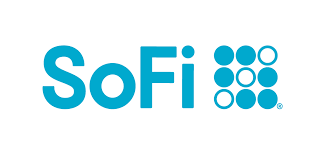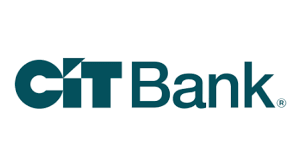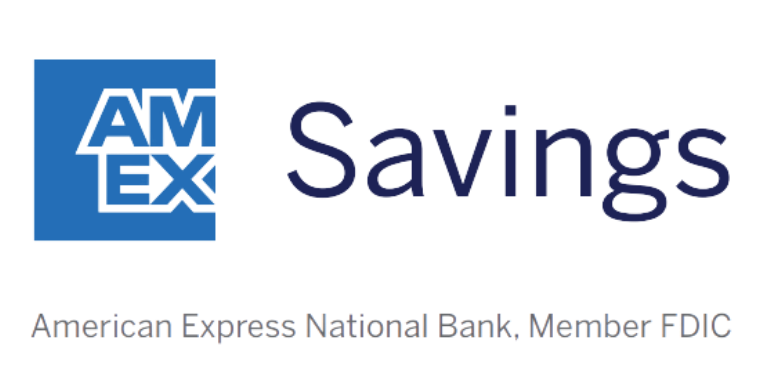Savings accounts are slowly but surely starting to pay higher APY on deposits. This is due to a combination of the rising popularity of high-yield online savings accounts and the rise in interest rates.
While this is certainly a good thing for savers, it does have its potential drawbacks. One big potential downside is the tax implication of receiving a larger amount of interest income. In this article, we'll explore the tax laws that might apply to interest you receive on your savings account, and whether you may have to pay tax on it or not.
Is savings account interest taxable?
The short answer is yes, interest you earn on a savings account is taxable income. The IRS considers most interest income to be a type of ordinary income and is taxable at the same marginal tax rate (tax bracket) as your earned income.
This includes, but is not necessarily limited to:
- Interest on savings and checking accounts.
- Interest on cash management accounts, which are a type of interest-bearing account offered by many brokerage firms.
- Interest earned on credit union accounts, which is often referred to as dividends.
- Interest on certificate of deposit (CD) accounts.
- Interest you receive from savings bonds.
- Interest you receive on loans you make.
There are some forms of interest income that are not taxable, such as interest from municipal bonds. But when it comes to savings accounts, there are no such exemptions.
Compare savings rates
Make sure you're getting the best account for you by comparing savings rates and promotions. Here are some of our favorite high-yield savings accounts to consider.
| Account | APY | Promotion | Next Steps |
|---|---|---|---|

Open Account for SoFi Checking and Savings
On SoFi's Secure Website.
Rating image, 4.50 out of 5 stars.
4.50/5
Our ratings are based on a 5 star scale.
5 stars equals Best.
4 stars equals Excellent.
3 stars equals Good.
2 stars equals Fair.
1 star equals Poor.
We want your money to work harder for you. Which is why our ratings are biased toward offers that deliver versatility while cutting out-of-pocket costs.
|
up to 3.80%²
Rate info
You can earn the maximum APY by having Direct Deposit (no minimum amount required) or by making $5,000 or more in Qualifying Deposits every 30 days. See SoFi Checking and Savings rate sheet at: https://www.sofi.com/legal/banking-rate-sheet.
Min. to earn: $0
|
New customers can earn up to a $300 bonus with qualifying direct deposits!¹
|
Open Account for SoFi Checking and Savings
On SoFi's Secure Website. |

Open Account for CIT Platinum Savings
On CIT's Secure Website.
Rating image, 4.50 out of 5 stars.
4.50/5
Our ratings are based on a 5 star scale.
5 stars equals Best.
4 stars equals Excellent.
3 stars equals Good.
2 stars equals Fair.
1 star equals Poor.
We want your money to work harder for you. Which is why our ratings are biased toward offers that deliver versatility while cutting out-of-pocket costs.
|
4.10% APY for balances of $5,000 or more
Rate info
4.10% APY for balances of $5,000 or more; otherwise, 0.25% APY
Min. to earn: $100 to open account, $5,000+ for max APY
|
Earn a bonus of at least $225 after a one-time deposit of $25,000+.
Transfer a one-time deposit of $25,000-$49,999.99 for a bonus of $225. Transfer a one-time deposit of $50,000+ for a bonus of $300. Account must be opened with code PS2025 while this promotion lasts, and funded within 30 days. Bonus will be fulfilled within 60 days from the funding date. There is no period of time where the customer will be required to maintain the funds. Account must be open when bonus is credited. One bonus per account and primary customer. Bonus will be credited into the Platinum Savings Account that fulfills the funding requirement. Funding can be deposited all at once or incrementally.
|
Open Account for CIT Platinum Savings
On CIT's Secure Website. |

Open Account for American Express® High Yield Savings
On American Express's Secure Website.
Rating image, 4.00 out of 5 stars.
4.00/5
Our ratings are based on a 5 star scale.
5 stars equals Best.
4 stars equals Excellent.
3 stars equals Good.
2 stars equals Fair.
1 star equals Poor.
We want your money to work harder for you. Which is why our ratings are biased toward offers that deliver versatility while cutting out-of-pocket costs.
|
3.70%
Rate info
3.70% annual percentage yield as of April 17, 2025. Terms apply.
Min. to earn: $0
|
N/A
|
Open Account for American Express® High Yield Savings
On American Express's Secure Website. |
SoFi disclosure:
¹ New and existing Checking and Savings members who have not previously enrolled in Direct Deposit with SoFi are eligible to earn a cash bonus of either $50 (with at least $1,000 total Direct Deposits received during the Direct Deposit Bonus Period) OR $300 (with at least $5,000 total Direct Deposits received during the Direct Deposit Bonus Period). Cash bonus will be based on the total amount of Direct Deposit. Direct Deposit Promotion begins on 12/7/2023 and will be available through 1/31/26. See full bonus and annual percentage yield (APY) terms at sofi.com/banking#1.
² SoFi members who enroll in SoFi Plus with Direct Deposit or by paying the SoFi Plus Subscription Fee every 30 days or with $5,000 or more in Qualifying Deposits during the 30-Day Evaluation Period can earn 3.80% annual percentage yield (APY) on savings balances (including Vaults) and 0.50% APY on checking balances. There is no minimum Direct Deposit amount required to qualify for the stated interest rate. Members without either SoFi Plus or Qualifying Deposits, during the 30-Day Evaluation Period will earn 1.00% APY on savings balances (including Vaults) and 0.50% APY on checking balances. Only SoFi Plus members are eligible for other SoFi Plus benefits. Interest rates are variable and subject to change at any time. These rates are current as of 1/24/25. There is no minimum balance requirement. Additional information can be found at http://www.sofi.com/legal/banking-rate-sheet. See the SoFi Plus Terms and Conditions at https://www.sofi.com/terms-of-use/#plus.
³ We do not charge any account, service or maintenance fees for SoFi Checking and Savings. We do charge a transaction fee to process each outgoing wire transfer. SoFi does not charge a fee for incoming wire transfers, however the sending bank may charge a fee. Our fee policy is subject to change at any time. See the SoFi Checking & Savings Fee Sheet for details at sofi.com/legal/banking-fees/.
⁴ SoFi Bank is a member FDIC and does not provide more than $250,000 of FDIC insurance per depositor per legal category of account ownership, as described in the FDIC’s regulations.
Any additional FDIC insurance is provided by the SoFi Insured Deposit Program. Deposits may be insured up to $3M through participation in the program. See full terms at SoFi.com/banking/fdic/sidpterms. See list of participating banks at SoFi.com/banking/fdic/participatingbanks.
⁵ We’ve partnered with Allpoint to provide you with ATM access at any of the 55,000+ ATMs within the Allpoint network. You will not be charged a fee when using an in-network ATM, however, third-party fees incurred when using out-of-network ATMs are not subject to reimbursement. SoFi’s ATM policies are subject to change at our discretion at any time.
⁶ Early access to direct deposit funds is based on the timing in which we receive notice of impending payment from the Federal Reserve, which is typically up to two days before the scheduled payment date, but may vary.
⁷ Overdraft Coverage is limited to $50 on debit card purchases only and is an account benefit available to customers with direct deposits of $1,000 or more during the current 30-day Evaluation Period as determined by SoFi Bank, N.A. The 30-Day Evaluation Period refers to the “Start Date” and “End Date” set forth on the APY Details page of your account, which comprises a period of 30 calendar days (the“30-Day Evaluation Period”). You can access the APY Details page at any time by logging into your SoFi account on the SoFi mobile app or SoFi website and selecting either (i) Banking > Savings > Current APY or (ii) Banking > Checking > Current APY. Members with a prior history of non-repayment of negative balances are ineligible for Overdraft Coverage.
How is interest income taxed?
For the most part, interest income is taxed as ordinary income, which means it is taxed in the same manner as income from a job. Depending on your income, tax deductions, and other variables, the income tax brackets (marginal tax rates) currently range from 10% to 37%.
Interest is reported to the IRS on Form 1099-INT, which is issued by the institution (such as your bank) that pays you interest. Box 1 of this form will have all of the interest income you were paid during the year. When you fill out your tax return each year, interest income is reported in Schedule B: Interest and Ordinary Dividends. But it's worth noting that if you use tax preparation software to complete your return, the information you enter will automatically be placed on the correct form.
LEARN MORE: Is the Interest Rate for Savings Accounts Monthly or Yearly?
How much interest income can I earn on my savings tax-free?
Technically, the IRS requires you to report (and pay tax on) all of your interest income. Having said that, there are a couple of things to know.
First, the institution that pays you interest (your bank) is only required to send you a Form 1099-INT documenting the income if they paid $10 or more during the tax year. A copy of this form will also be sent to the IRS. So, if your bank account paid you $2 in interest last year, there won't be any tax documentation on it. To be sure, we're not telling you not to report your savings interest, but $10 is the threshold where your bank is required to report it.
According to the IRS, "You must report all taxable and tax-exempt interest on your federal income tax return, even if you don't receive a Form 1099-INT or Form 1099-OID." If you don't receive a Form 1099-INT for your savings account, you can use your statements to figure out how much interest you received. So, just to be perfectly clear, if you earned just a few cents of interest from your savings account, you're still legally required to report it.
It's also worth pointing out that if you don't have any taxable income, your savings interest may not be taxable. For example, if your savings interest plus all of your other income is less than your applicable tax deductions, you likely won't have to pay any tax on it.
The other caveat is that you don't have to pay tax on interest you earn on a retirement account. For example, if you have $20,000 in cash in your traditional IRA and your broker pays you $50 in interest on that money this year, it won't be taxable until you withdraw the money from the account. It's fairly common to open CDs or other interest-bearing deposit accounts within retirement accounts, and these can be a good way to earn savings interest without having to pay tax.
Will you have to pay tax on your savings interest?
If you receive more than $10 in savings interest from your bank, the answer is yes, unless the interest was paid within a retirement account, or you don't have any federal income tax liability at all. Not only will you be issued a tax document for the interest, but a copy will be sent to the IRS as well. In other words, the IRS will know how much interest you've been paid.
If you receive less than $10, you are still required to report the interest you receive and pay any applicable tax on it. However, it's completely on you to report it at that point, as there will be no tax documentation issued by your bank.
LEARN MORE: How to Calculate Interest Rate on Savings Accounts
Many people are missing out on guaranteed returns as their money languishes in a big bank savings account earning next to no interest. Motley Fool Money's top savings account picks can earn you more than 10x the national average savings account rate.
FAQs
-
Sort of. If you open an interest-bearing account within a retirement account, you won't have to pay tax on it. But in general, savings account interest is always taxable at your ordinary income rate, and is reported to the IRS if you earn $10 or more during the year.
-
Interest is reported to you and the IRS from your bank on Form 1099-INT. If your interest is paid in a brokerage account, it may be reported on a consolidated Form 1099, which can include things like dividend income and profits from stock sales.
With your tax return, interest income is reported on Schedule D. And the IRS requires you to report all of the interest income you receive during the year, even if you didn't receive a Form 1099 documenting it.
-
It depends. The only ways your savings account interest is usually tax-free is if it is paid within a retirement account like an IRA, or if you have no federal tax liability at all because your total income is less than your tax deductions. The threshold where your savings interest is reported to the IRS is $10, but it's important to realize that you're technically required to report and pay tax on all interest you receive, even if it's below this threshold.
We're firm believers in the Golden Rule, which is why editorial opinions are ours alone and have not been previously reviewed, approved, or endorsed by included advertisers. Motley Fool Money does not cover all offers on the market. Motley Fool Money is 100% owned and operated by The Motley Fool. Our knowledgeable team of personal finance editors and analysts are employed by The Motley Fool and held to the same set of publishing standards and editorial integrity while maintaining professional separation from the analysts and editors on other Motley Fool brands. Terms may apply to offers listed on this page. APYs are subject to change at any time without notice.